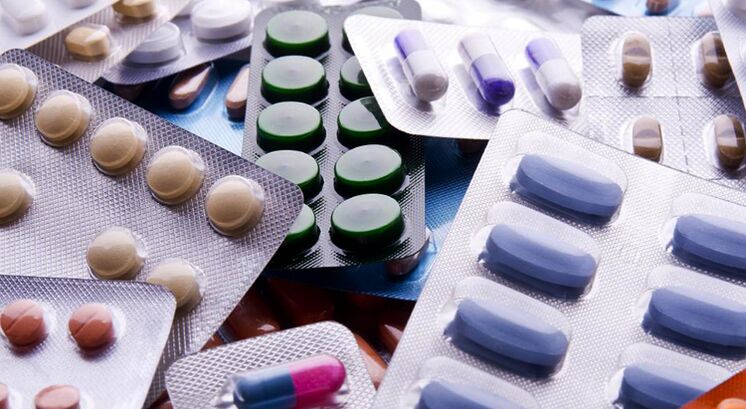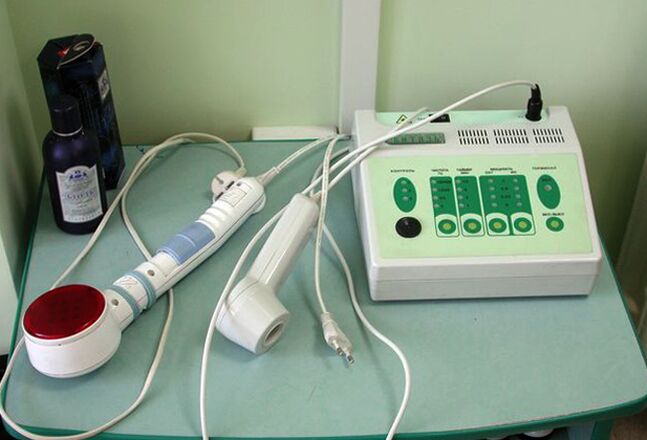The relevance of studying the mechanism of development of chronic prostatitis grows in direct proportion to the increase in the number of diagnosed cases of the disease. It is known that chronic prostatitis (CP) occupies a leading place among urological diseases and is the result of many factors that are an integral part of modern life (social environment, ecology, increased resistance of pathogens to antibacterial drugs).
Since the disease not only covers an increasing percentage of the male population, but is also diagnosed at an increasingly young age, there is often a rather dismissive attitude towards the problem by doctors who use formulaic treatment regimens that are unable to lead to recovery.
What is chronic prostatitis
The diagnosis of chronic prostatitis (CP) combines a fairly wide range of pathological processes in the prostate, which manifest themselves in the form of a chronic inflammatory tissue process. However, one cannot talk about CP only as a result of pathogen penetration into the prostate, because such a point of view justifies attempts to treat prostatitis exclusively with antibiotics, which almost never brings lasting positive results.
The main factors underlying the development of pathology can be considered complex changes in the tissues and, accordingly, the functional abilities of the gland, which are the main cause of the development of infectious microflora. Chronic prostatitis is to some extent a collective diagnosis that combines several factors:
- Reduced immunity.
- Stagnant processes in the pelvic organs.
- Urodynamic disorder.
- Degenerative processes in the prostate parenchyma.
- Trophic disorder.
- inflammatory processes.
Development mechanism
The penetration of pathogenic microflora into a healthy prostate practically cannot cause an inflammatory process, because the microflora of the prostate has a certain resistance to pathogens present in the urethra. However, the presence of one or more of the above-mentioned provoking factors leads to the development of permanent inflammation, followed by the appearance of scars (fibrotization) or areas of necrosis.
Proliferation of connective tissue in the process of creating scars causes congestive processes in the acini (ducts that ensure the excretion of secretions), which complicate the course of the disease. Necrotization of the tissue leads to the creation of a cavernous cavity, in which, in addition to the dead epithelium, the secret of the prostate accumulates.
Therefore, the main cause of the development of CP is not infection, but various physiological disorders that allow the inflammatory process to become chronic.
Another characteristic feature of the disease that makes diagnosis difficult isflow periodicity. As a rule, under the influence of external factors or the internal state of the body, there is a periodic change in the intensity of the pathology, during which acute conditions are replaced by periods of remission.
Often there is not only a complete absence of symptoms, but also a lack of laboratory indicators that indicate the presence of infection (for example, leukocytes). Despite the positive results, this condition cannot be considered a recovery, as all physiological disorders in the gland remained unchanged.
Reasons
The main causes of circulatory disorders in the pelvic organs and stagnation of venous blood in the prostate are:
- Permanent stay in a sitting position.
- Hypothermia of the whole body or directly in the pelvic region.
- Systematic imprisonment.
- Prolonged abstinence from sexual activity or excessive sexual activity.
- The presence in the body of a chronic infection of any localization (sinusitis, bronchitis).
- Excessive physical activity, accompanied by a lack of sleep or rest, causes immune suppression.
- History of urogenital infections (gonorrhea, trichomoniasis).
- Toxic effects on the body due to the systematic use of alcoholic beverages.
The presence of any of these causes leads to the appearance of stagnant processes, deterioration of the excretory function of the glands, reduction of cellular resistance to diseases, which contributes to the creation of optimal conditions for the reproduction of pathogenic microorganisms in the prostate. .
Can chronic prostatitis be cured?
Despite the availability of a large amount of systematized information on the mechanism of CP development,its treatment is extremely difficultand is one of the leading problems in modern urological practice.
Given that the disease in each individual patient proceeds according to an individual scheme, therefore, the approach to treatment should also be individual, taking into account all the physiological changes that have occurred in the prostate.
Anatomical characteristics of the prostate, which can be accessed either through the urethra or through the rectum, significantly reduce the effectiveness of the applied therapeutic effect. In this regard, in order to achieve a relatively stable result, a long course of therapy (usually several months) is required, during which the patient must strictly comply with all the doctor's requirements.

Unfortunately, complete healing can only be achievedin 30 cases out of 100. This is mainly due to untimely seeking of medical help, due to long absence of severe symptoms or conscious avoidance of unpleasant diagnostic and then therapeutic procedures. As a rule, at the time of treatment, atrophic processes in the prostate are irreversible, and even with long-term treatment, it is only possible to completely eliminate the symptoms and achieve a stable remission, the duration of which depends on the patient's consent. with doctor's recommendations.
Treatment
The complex of measures used in the treatment of CP includes:
Antibacterial therapy
Suppression of the activity of bacterial microflora with the help of antibiotics should be carried out only after a complex of laboratory tests, according to the results of which the most effective drug is prescribed.
As a rule, the duration of antibiotics is determined by the severity of the disease and is at least 30 days. It is unacceptable to interrupt the treatment, because the remaining microorganisms will become resistant to this group of drugs, and after that it will be necessary to replace them and extend the course. Antibiotics that have a bactericidal effect are preferred in the treatment of prostatitis:
- Fluoroquinolones;
- Azalides;
- Aminoglycosides;
- Tetracyclines.

If laboratory tests reveal the specific nature of the infection, for example, trichomoniasis or viral origin of prostatitis, nitroimidazoles or an antiviral drug are prescribed in parallel with antibiotics.
Use of antispasmodics and α-blockers
The main purpose of using drugs of this series is to relieve spasm in the pelvic floor, which helps to increase blood supply, improve urine flow and reduce pain.
Laxatives
In order to avoid excessive strain on the pelvic muscles that occurs during the act of defecation, it is advisable to use laxatives, as attempts at constipation can worsen the patient's condition.
Physiotherapy
One of the most common methods of physiotherapy is rectal prostate massage. The therapeutic effect of a finger strike on the prostate, which is carried out through the anus, is to push out the infected secret, which is then excreted through the urethra.

In addition, the blood flow to the tissues increases during the massage, which has a positive effect on the antibiotic therapy. The following physiotherapeutic methods are also used to perform rectal massage of the prostate:
- Electrical simulation.
- High frequency thermotherapy.
- Infrared laser therapy.
Prevention
After stabilization of the condition, the patient is obliged to adhere to the rules that impose certain restrictions on the usual way of life:
- Avoid water procedures in open tanks and pools.
- Check yourself regularly with a doctor.
- Refrain from drinking alcohol completely.
- Have a regular sex life with one partner.
Compliance with the rules will allow you to stay in remission as long as possible and avoid exacerbations of the disease.































